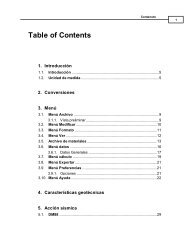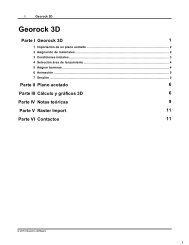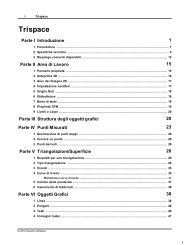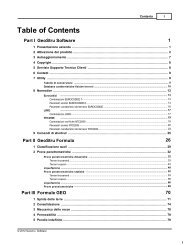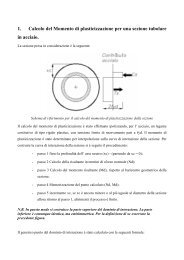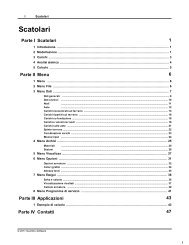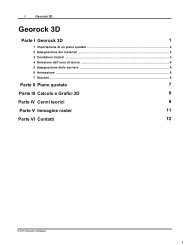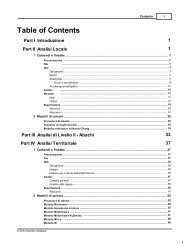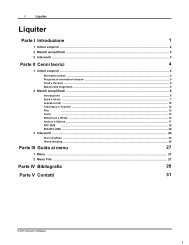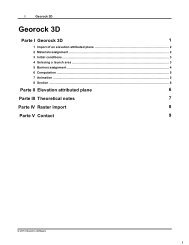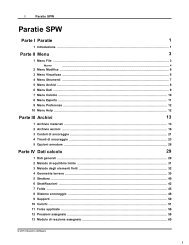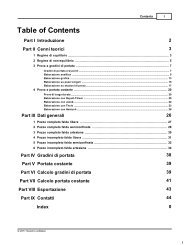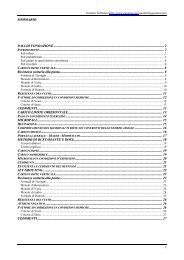Manual utilizator Slope - GeoStru Software
Manual utilizator Slope - GeoStru Software
Manual utilizator Slope - GeoStru Software
Create successful ePaper yourself
Turn your PDF publications into a flip-book with our unique Google optimized e-Paper software.
45<br />
<strong>Slope</strong><br />
into account the presence of the masses associated with all gravity loads<br />
appearing in the following combination of actions:<br />
G k, j ' ''<br />
E,<br />
i Qk,<br />
i<br />
' (3.17)<br />
where:<br />
E,i<br />
is the combination coefficient for variable action i (see 4.2.4).<br />
3.The combination coefficients<br />
E,i<br />
take into account the likelihood of the loads<br />
Q k,i<br />
not being present over the entire structure during the earthquake. These<br />
coefficients may also account for a reduced participation of masses in the<br />
motion of the structure due to the non-rigid connection between them.<br />
4.Values of<br />
2,i are given in EN 1990:2002 and values of E,i<br />
other types of<br />
structures are given in the relevant parts of EN 1998.<br />
4.1.3 <strong>Slope</strong> stability<br />
4.1.3.3 Methods of analysis (EC 8-part 5)<br />
1.The response of ground slopes to the design earthquake shall be calculated<br />
either by means of established methods of dynamic analysis, such as finite<br />
elements or rigid block models, or by simplified pseudo-static methods subject<br />
to the limitations of (3) and (8) of this subclause.<br />
2.In modelling the mechanical behaviour of the soil media, the softening of the<br />
response with increasing strain level, and the possible effects of pore pressure<br />
increase under cyclic loading shall be taken into account.<br />
3.The stability verification may be carried out by means of simplified<br />
pseudostatic methods where the surface topography and soil stratigraphy do<br />
not present very abrupt irregularities.<br />
4.The pseudo-static methods of stability analysis are similar to those indicated in<br />
EN 1997-1:2004, 11.5, except for the inclusion of horizontal and vertical<br />
inertia forces applied to every portion of the soil mass and to any gravity loads<br />
acting on top of the slope.<br />
© <strong>GeoStru</strong> <strong>Software</strong>-<strong>Slope</strong> 8.0.1




